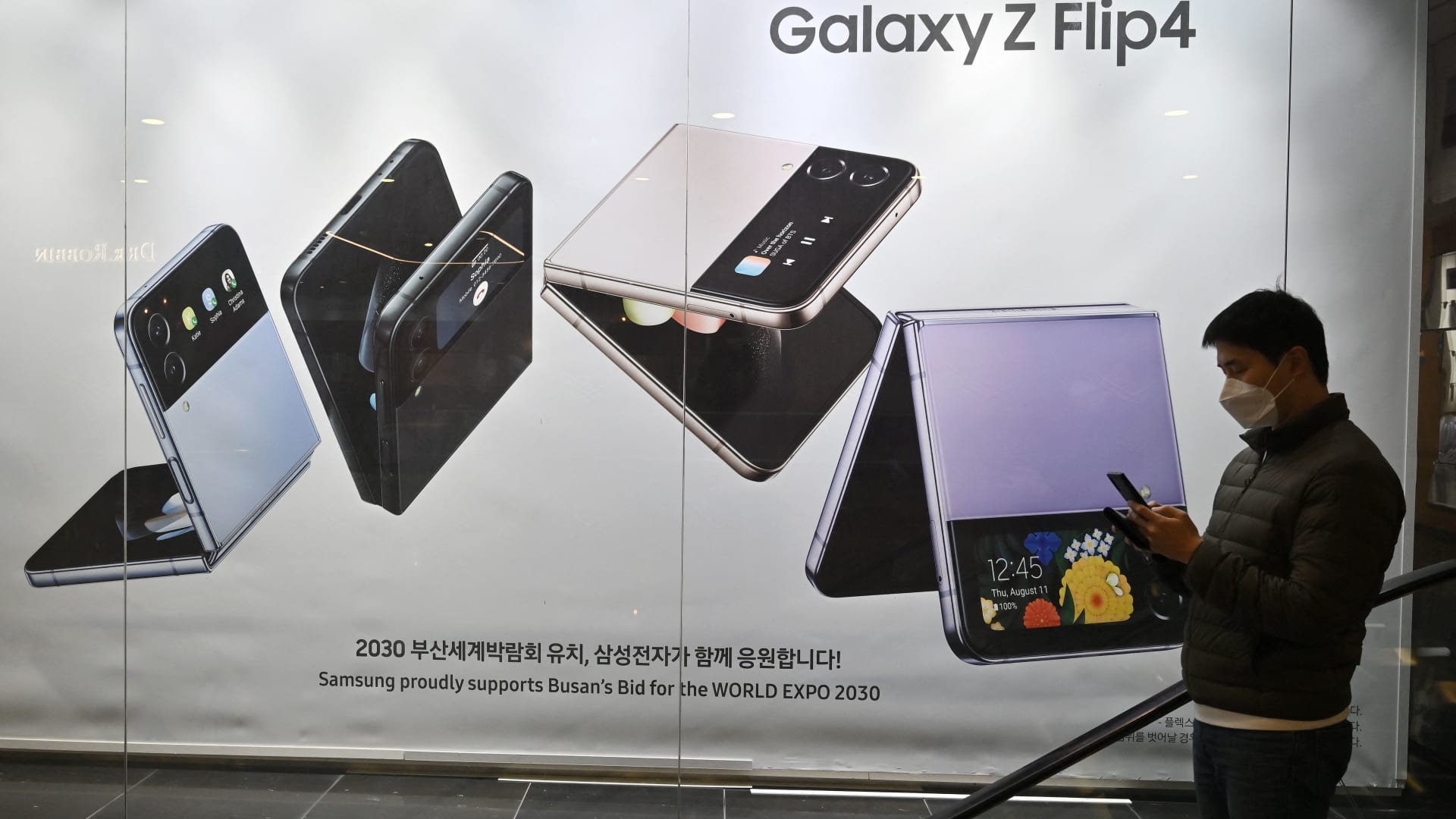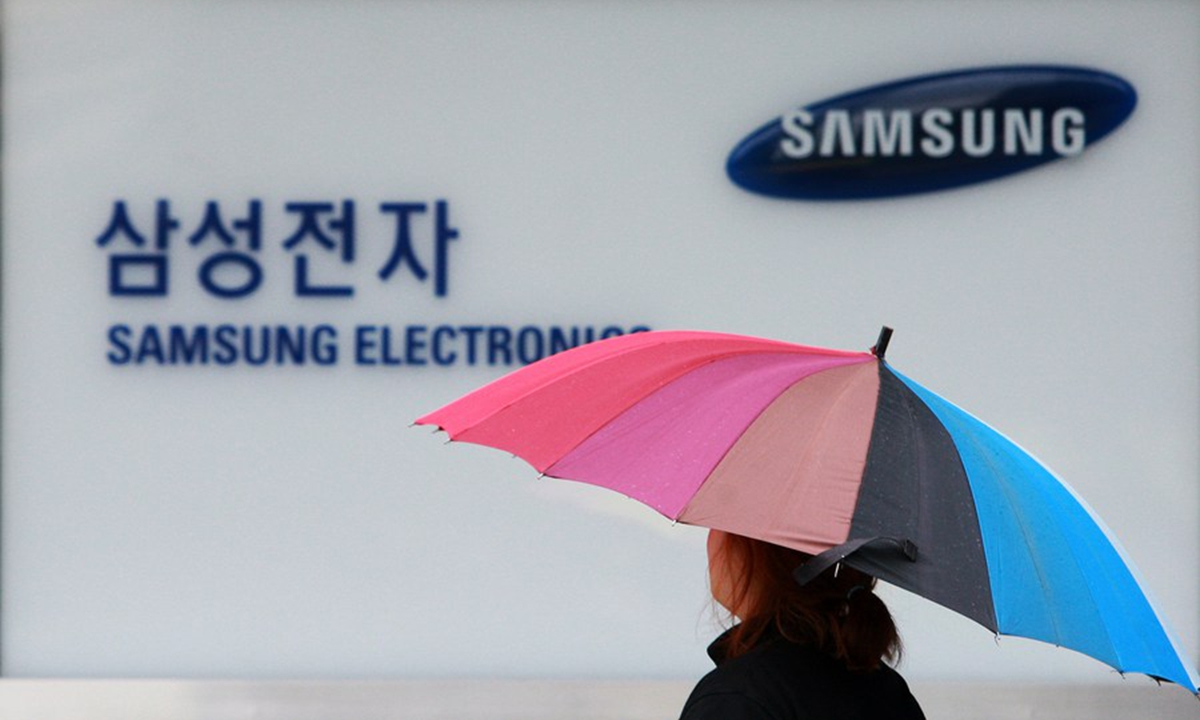Samsung has issued a stark warning, revealing a staggering 78% drop in its third-quarter operating profit due to persistently weak demand for semiconductor chips and consumer devices.
The South Korean tech giant released its earnings estimate on Wednesday, projecting an operating profit of approximately 2.4 trillion Korean won (equivalent to $1.8 billion) for the three months ending in September. In comparison, this is a sharp decline from the 10.85 trillion won (equivalent to $8 billion) it reported during the same period in the previous year.
Furthermore, Samsung anticipates a 12.7% decrease in revenue from a year ago; the ongoing decline in performance stresses the challenging period the electronics manufacturer has been facing, marked by substantial losses as global economic uncertainties prompt consumers to hold onto their mobile phones and laptops for longer periods.
According to Counterpoint Research, 2023 is poised to be the worst year for global smartphone shipments in a decade, with a projected 6% drop in shipments, falling below 1.2 billion units; notably, even in major markets such as North America, consumers are showing reluctance to upgrade their devices.
The Steady Fall
Samsung’s struggles began with a catastrophic 95% decline in operating profit during the first quarter, following a record loss in its semiconductor business.
The second quarter yielded similar results, and this can be attributed to the global semiconductor industry’s shift from a supply shortage during the pandemic to an oversupply in some segments, causing losses for Samsung, a leader in memory chips and smartphones.
Following Samsung’s announcement, its shares saw a 3.5% rise in Seoul on Wednesday.
Bain consultancy predicts that this oversupply is part of a cyclical trend in the semiconductor industry, with its ups and downs; in a report last month, Bain attributed it to normal industry fluctuations and suggested that a gradual recovery in global demand in the second half of the year could improve earnings, particularly in the component business.

However, Samsung cautions that ongoing macroeconomic risks could still pose challenges; still, analysts remain optimistic that the memory chip sector will rebound, benefitting companies like Samsung.
In a recent client note, Nomura analysts anticipate a recovery in the sector gaining momentum throughout the remainder of the year, expecting memory prices to either remain stable or slightly increase in the third quarter and then demonstrate robust growth in the fourth quarter.
Semiconductor Market Sees A Slow-Down
The semiconductor industry as a whole is also grappling with challenges; research firm Gartner predicts that, in 2023, it is likely to experience a 3.6% decline in revenues, falling to approximately $596 billion, in contrast to the 4% growth at nearly $618 billion in 2022. The decline is attributed to weak demand and concerns about a global economic recession.
Gartner cites the rapid deterioration of the global economy and declining consumer demand as key factors affecting semiconductor revenues in 2023.
Consumer-driven markets are particularly impacted by decreasing disposable income due to rising inflation and interest rates. Moreover, consumers are reprioritizing their discretionary spending toward activities like travel, leisure, and entertainment.
Despite these challenges, enterprise-driven markets, including enterprise networking, enterprise compute, industrial, medical, and commercial transportation, have demonstrated relative resilience in the face of a potential macroeconomic slowdown and geopolitical uncertainties.
Notably, the memory market, which had a flat year in 2022, is projected to decline by 16.2% in 2023 due to the worsening economic outlook.

Smartphone, PC, and consumer electronics production have been negatively affected, resulting in a 2.6% decrease in DRAM (Dynamic Random-Access Memory) revenues to $90.5 billion in 2022. This decline is expected to deepen to 18% in 2023, with DRAM revenues estimated at $74.2 billion.
Despite weakening consumer demand, the semiconductor industry may see more stable consumption from business investments, particularly in sectors like industrial, telecom infrastructure, and data centers, which are expected to be less affected by consumer sentiment and spending in the short term.
The Last Bit, Samsung’s dire financial outlook is similar to challenges faced by the tech industry amidst changing consumer trends and global economic uncertainties.
With weak demand for both semiconductor chips and consumer devices, the company’s profitability has taken a significant hit; moreover, the semiconductor industry, as a whole, is grappling with a declining revenue forecast in 2023, driven by weakening consumer demand and economic concerns.
However, experts remain cautiously optimistic about the future, believing that these challenges may be part of a cyclical pattern; as Samsung and the industry navigate these turbulent waters, they may yet find a path to recovery, particularly as business investments and the memory chip sector show signs of resilience.



